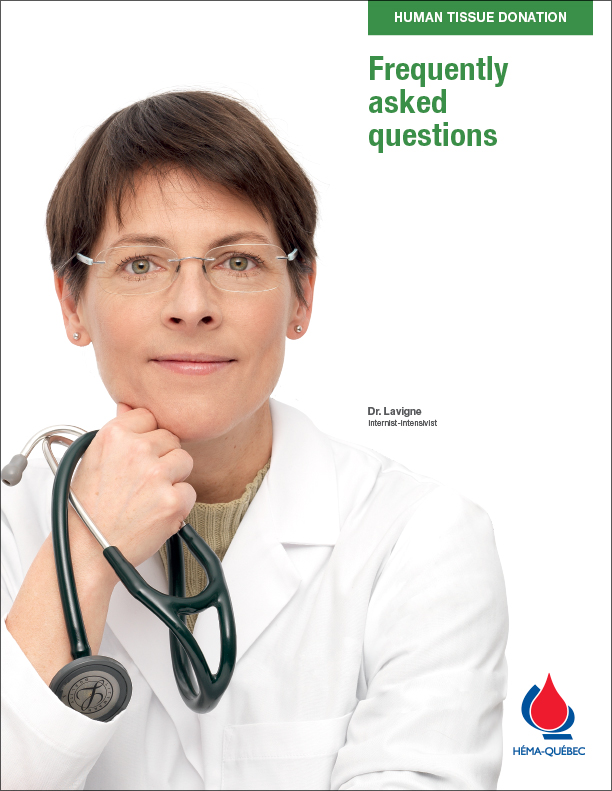Frequently asked questions
| Download the document (PDF) |
Section 204.1 of the AHSSS, facilitating the donation of organs and tissues, stipulates that the Director of professional services of an institution operating a general and specialized hospital shall diligently, when informed of the recent death of a potential tissue donor, identify and recommend the individual and transmit all necessary medical information about the deceased to Héma-Québec.
The role of healthcare staff at each institution, therefore, is to ensure the identification of potential tissue donors and to recommend donors to Héma-Québec.
Yes. Potential donors whose death is the subject of a coroner’s inquest or for which an autopsy is required must be recommended to Héma-Québec. A Héma-Québec coordinator will contact the coroner or pathologist to follow up on the donation process.
Tissue donation can greatly improve quality of life and even save the lives of several people. A single tissue donor can help up to 20 recipients.
No tissues are retrieved without the family’s consent. Usually, when they are informed that their loved one has consented to tissue donation upon death, the family will respect and honour the decision. This is why it is important to recommend the potential donor to Héma-Québec before suggesting the tissue donation option to the family. A Héma-Québec coordinator will check the consent registries and let hospital staff know whether or not there is donor consent.
Héma-Québec collects the following human tissues: heart valves (aortic and pulmonary) with their respective arteries; thoracic and abdominal aortas with or without the aortoiliac junction; femoral arteries; musculoskeletal tissues (tendons, bone); cutaneous tissues (skin); and ocular tissues, including corneas.
Tissues can be recovered in persons 85 years of age and under who have recently died (cardiorespiratory death within 24 hours and not maintained on life support).
The donor’s body is treated with care and respect by a team of professionals specializing in tissue removal. The process is carried out in facilities specially designed for that purpose at Héma-Québec or a hospital operating room, according to stringent procedures that comply with Health Canada standards and those of various recognized regulatory agencies. The tissues are processed and conserved until they are grafted.
Yes. The procedure for recovering tissues does not change the donor’s appearance, and an open-casket funeral is possible.
Héma-Québec is responsible for transferring the body to its facilities and obtains from the family the contact information of the funeral home to which the body is to be sent.

